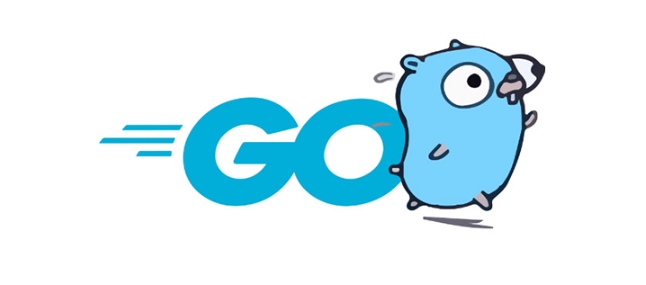 Backend Development
Backend Development
 Golang
Golang
 Strategies for Integrating Golang Services with Existing Python Infrastructure
Strategies for Integrating Golang Services with Existing Python Infrastructure
Strategies for Integrating Golang Services with Existing Python Infrastructure
Jul 02, 2025 pm 04:39 PMTo integrate Golang services with existing Python infrastructure, use REST APIs or gRPC for inter-service communication, allowing Go and Python apps to interact seamlessly through standardized protocols.1. Use REST APIs (via frameworks like Gin in Go and Flask in Python) or gRPC (with Protocol Buffers) for efficient, cross-language communication.2. Share data via a common database (e.g., PostgreSQL) or message queues (e.g., Kafka) to decouple services and enable asynchronous processing.3. Leverage Docker and containerization to ensure consistent deployment across both language environments, using Docker Compose or Kubernetes for orchestration.4. Consider embedding one language within the other (e.g., calling Go from Python via ctypes or running Python scripts in Go) only when high-performance or tight integration is required, as these methods are complex and best reserved for advanced use cases.

Integrating Golang services with an existing Python infrastructure can be a powerful way to leverage the strengths of both languages — Go for performance and concurrency, and Python for flexibility and ecosystem. The key is to treat them as complementary parts of a larger system rather than competing tools.

1. Use REST APIs or gRPC for Inter-Service Communication
One of the most straightforward ways to connect Go and Python services is through standard communication protocols like REST or gRPC.

REST APIs are widely supported in both ecosystems. You can build a Go service using frameworks like Gin or Echo and expose endpoints that your Python app (e.g., Flask or Django) calls via HTTP requests.
gRPC is another solid option, especially if you need high-performance communication. It uses Protocol Buffers for serialization, which works well across languages. Define your service interface once, generate client and server code for both Go and Python, and you're good to go.

Tips:
- Keep API contracts clear and versioned.
- Use JSON for REST unless performance is critical — it’s easier to debug.
- For gRPC, make sure both teams understand how to manage
.protofiles.
2. Share Data Through a Common Database or Message Queue
Instead of direct API calls, sometimes it makes more sense to let services communicate through shared data stores.
You can use a common database like PostgreSQL or MySQL where both Go and Python applications read from and write to. This avoids tight coupling and allows each service to process data at its own pace.
Alternatively, message queues like RabbitMQ, Kafka, or even Redis can act as the middle layer. A Python service publishes a message, and a Go service consumes it — or vice versa.
Why this helps:
- Decouples services so they don’t have to be online at the same time.
- Eases scaling since each part can grow independently.
- Reduces latency issues from synchronous calls.
3. Leverage Docker and Containerization for Consistent Deployment
Both Go and Python apps can run inside containers, making deployment much smoother when integrating across languages.
Use Docker images for each service — a Python web app in one container, a Go microservice in another. Then orchestrate them together using Docker Compose or Kubernetes.
This approach ensures that environment differences (like Python virtual environments vs Go modules) don’t cause issues during integration.
Best practices:
- Keep dependencies isolated per service.
- Reuse base images where possible to reduce overhead.
- Use environment variables for configuration, not hardcoded values.
4. Consider Embedding One Language Inside the Other (Advanced)
In some cases, you might want tighter integration — like calling Go code from Python or embedding Python scripts into a Go binary.
For Go → Python: Tools like Cgo combined with Python's C API can work, but it’s complex. More practical options include using PyGoPython or running Python scripts as subprocesses from Go.
For Python → Go: Wrapping Go code as a C shared library and calling it via ctypes in Python is possible, though not trivial.
When to consider this:
- When performance-critical sections are better written in Go.
- When legacy Python systems must directly call optimized Go functions.
These methods are advanced and should only be used when necessary. Most integrations will work fine with APIs or messaging.
That’s basically how you can bring Go services into a Python-based architecture without tearing everything down. It doesn't have to be all-or-nothing — start small, pick the integration method that fits your team and use case, and build from there.
The above is the detailed content of Strategies for Integrating Golang Services with Existing Python Infrastructure. For more information, please follow other related articles on the PHP Chinese website!

Hot AI Tools

Undress AI Tool
Undress images for free

Undresser.AI Undress
AI-powered app for creating realistic nude photos

AI Clothes Remover
Online AI tool for removing clothes from photos.

Clothoff.io
AI clothes remover

Video Face Swap
Swap faces in any video effortlessly with our completely free AI face swap tool!

Hot Article

Hot Tools

Notepad++7.3.1
Easy-to-use and free code editor

SublimeText3 Chinese version
Chinese version, very easy to use

Zend Studio 13.0.1
Powerful PHP integrated development environment

Dreamweaver CS6
Visual web development tools

SublimeText3 Mac version
God-level code editing software (SublimeText3)

Hot Topics
 What are python iterators?
Jul 08, 2025 am 02:56 AM
What are python iterators?
Jul 08, 2025 am 02:56 AM
InPython,iteratorsareobjectsthatallowloopingthroughcollectionsbyimplementing__iter__()and__next__().1)Iteratorsworkviatheiteratorprotocol,using__iter__()toreturntheiteratorand__next__()toretrievethenextitemuntilStopIterationisraised.2)Aniterable(like
 How to iterate over two lists at once Python
Jul 09, 2025 am 01:13 AM
How to iterate over two lists at once Python
Jul 09, 2025 am 01:13 AM
A common method to traverse two lists simultaneously in Python is to use the zip() function, which will pair multiple lists in order and be the shortest; if the list length is inconsistent, you can use itertools.zip_longest() to be the longest and fill in the missing values; combined with enumerate(), you can get the index at the same time. 1.zip() is concise and practical, suitable for paired data iteration; 2.zip_longest() can fill in the default value when dealing with inconsistent lengths; 3.enumerate(zip()) can obtain indexes during traversal, meeting the needs of a variety of complex scenarios.
 How to call Python from C ?
Jul 08, 2025 am 12:40 AM
How to call Python from C ?
Jul 08, 2025 am 12:40 AM
To call Python code in C, you must first initialize the interpreter, and then you can achieve interaction by executing strings, files, or calling specific functions. 1. Initialize the interpreter with Py_Initialize() and close it with Py_Finalize(); 2. Execute string code or PyRun_SimpleFile with PyRun_SimpleFile; 3. Import modules through PyImport_ImportModule, get the function through PyObject_GetAttrString, construct parameters of Py_BuildValue, call the function and process return
 What is a forward reference in Python type hints for classes?
Jul 09, 2025 am 01:46 AM
What is a forward reference in Python type hints for classes?
Jul 09, 2025 am 01:46 AM
ForwardreferencesinPythonallowreferencingclassesthatarenotyetdefinedbyusingquotedtypenames.TheysolvetheissueofmutualclassreferenceslikeUserandProfilewhereoneclassisnotyetdefinedwhenreferenced.Byenclosingtheclassnameinquotes(e.g.,'Profile'),Pythondela
 What is descriptor in python
Jul 09, 2025 am 02:17 AM
What is descriptor in python
Jul 09, 2025 am 02:17 AM
The descriptor protocol is a mechanism used in Python to control attribute access behavior. Its core answer lies in implementing one or more of the __get__(), __set__() and __delete__() methods. 1.__get__(self,instance,owner) is used to obtain attribute value; 2.__set__(self,instance,value) is used to set attribute value; 3.__delete__(self,instance) is used to delete attribute value. The actual uses of descriptors include data verification, delayed calculation of properties, property access logging, and implementation of functions such as property and classmethod. Descriptor and pr
 Parsing XML data in Python
Jul 09, 2025 am 02:28 AM
Parsing XML data in Python
Jul 09, 2025 am 02:28 AM
Processing XML data is common and flexible in Python. The main methods are as follows: 1. Use xml.etree.ElementTree to quickly parse simple XML, suitable for data with clear structure and low hierarchy; 2. When encountering a namespace, you need to manually add prefixes, such as using a namespace dictionary for matching; 3. For complex XML, it is recommended to use a third-party library lxml with stronger functions, which supports advanced features such as XPath2.0, and can be installed and imported through pip. Selecting the right tool is the key. Built-in modules are available for small projects, and lxml is used for complex scenarios to improve efficiency.
 how to avoid long if else chains in python
Jul 09, 2025 am 01:03 AM
how to avoid long if else chains in python
Jul 09, 2025 am 01:03 AM
When multiple conditional judgments are encountered, the if-elif-else chain can be simplified through dictionary mapping, match-case syntax, policy mode, early return, etc. 1. Use dictionaries to map conditions to corresponding operations to improve scalability; 2. Python 3.10 can use match-case structure to enhance readability; 3. Complex logic can be abstracted into policy patterns or function mappings, separating the main logic and branch processing; 4. Reducing nesting levels by returning in advance, making the code more concise and clear. These methods effectively improve code maintenance and flexibility.
 Implementing multi-threading in Python
Jul 09, 2025 am 01:11 AM
Implementing multi-threading in Python
Jul 09, 2025 am 01:11 AM
Python multithreading is suitable for I/O-intensive tasks. 1. It is suitable for scenarios such as network requests, file reading and writing, user input waiting, etc., such as multi-threaded crawlers can save request waiting time; 2. It is not suitable for computing-intensive tasks such as image processing and mathematical operations, and cannot operate in parallel due to global interpreter lock (GIL). Implementation method: You can create and start threads through the threading module, and use join() to ensure that the main thread waits for the child thread to complete, and use Lock to avoid data conflicts, but it is not recommended to enable too many threads to avoid affecting performance. In addition, the ThreadPoolExecutor of the concurrent.futures module provides a simpler usage, supports automatic management of thread pools and asynchronous acquisition





